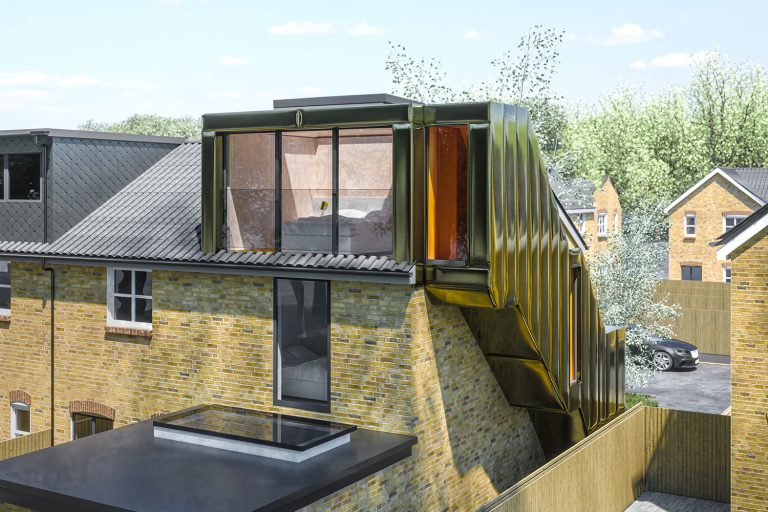Planning Permission Guide: 5 Things to consider before extending your home

Do you need planning permission?
This article aims to serve as a quick guide to building an extension focusing on RIBA Stage 3
Planning.
Planning permission, particularly concerning permitted development rights and recent updates, can be daunting. However, this guide aims to shed light on all aspects of planning permission for house extensions, addressing queries such as:
Is planning permission necessary for an extension?
What are the size limitations for an extension without planning permission?
Do permitted development rights apply to my situation?
Planning Permission for House Extensions: A Brief Overview
Planning permission might not be required for all extensions. It is possible for homeowners to extend their properties without planning permission by means of permitted development rights, provided the extension meets specified criteria. Permitted development rights often proves advantageous, as it offers a streamlined process, reducing the stress and potential expenses associated with full planning applications.
However, it’s important to note that permitted development rights don’t universally apply. Properties such as flats, maisonettes, and listed buildings aren’t covered, while those in conservation areas or areas of outstanding beauty have limited rights.
Your permitted development rights may have been removed if there is an ‘Article 4’ direction affecting your property.
Securing Legal Clarity: Lawful Development Certificates
While building within permitted development rights removes the need for full planning permission, obtaining a lawful development certificate is advisable. This certificate serves as proof of compliance with regulations and can be invaluable when selling your home.
Understanding Permitted Development Rights for Extensions
For single-storey extensions to qualify under permitted development rights, certain criteria must be met:
Footprint: The extension’s size must not exceed half of the land area surrounding the original house.
Location: The extension cannot encroach closer to the public highway than the original house.
Height: Its height must not surpass that of the existing house. If the extension is within two metres of a boundary, the overall maximum eaves height is restricted to 3m.
Materials: Proposed materials should match the appearance of the original house.
Other: Certain features like verandas, balconies, and chimneys are prohibited.
Wraparound Extensions which combine side and rear extensions, typically don’t fall under permitted development rights due to their complexity.
Side Extensions to be permissible under permitted development rights, they must meet specific requirements, such as single-storey construction, maximum height of 4m, not exceed half the width of the original house.
Rear Extensions, must adhere to length and height restrictions, with allowances for prior approval to extend up to 8m for detached houses and 6m for semi-detached and terraced houses. You will need to give notification under the Neighbour Consultation Scheme. If you get any objections, you may not be able to build a larger extension.
Other Restrictions and Regulations
Before starting on an extension project, it’s crucial to consider various restrictions and regulations:
Compliance with building regulations ensures structural safety and habitability.
Party Wall Agreements may be necessary to protect your and your neighbours interests.
Prior Approval is required for larger rear extensions, allowing neighbours to voice concerns regarding privacy and natural light.
Summary
In conclusion, understanding the nuances of planning permission for extensions empowers homeowners to navigate the construction process effectively, ensuring compliance with regulations and a successful outcome for their projects.
We have put together a free online tool to help you see if you need planning permission for your extension.
Please note, we recommend that you seek out professional advice from a RIBA charactered Architect before beginning any work. Feel free to contact us to discuss what’s possible with your project.
What can be built without planning permission?
- House Extension. You can often extend or add to your house without the need to apply for planning permission, provided you meet a set of limits and conditions
- Garages
- Conservatories
- Loft Conversions
- Roof Windows
- Windows & Doors
- Solar Panels
- Porches
How do I know if I need planning permission?
You’re likely to need planning permission if you intend to:
-
Construct a new building.
-
Alter the external appearance of an existing building.
-
Extend a property.
-
Convert a house into flats.
-
Change the use of a building or land.
What size can you go to without planning permission?
The extensions roof & ridges must not exceed the height of the original house and the eaves must not exceed 2m in height of the boundary of 3m.
Single-storey extensions must not exceed 4m in height. Single storey extension width must not exceed half of the original size of the house.
What is the 4 year rule for no planning permission?
The 4 year rule is an important rule in planning. It means that certain unlawful developments can be made lawful once they have been in place for at least 4 years. Generally speaking, a development will be unlawful if it required planning permission but no planning permission was granted.
PLANNING PERMISSION GUIDE TOOL
Try our Free Planning Permission Guide Tool below to see if you can extend without planning permsion.
(NOTE: We recommend that you seek out professional advice from a RIBA charactered Architect before beginning any work. Feel free to contact us to discuss what’s possible with your project.)
To find out how we can help further, contact us using our CONTACT FORM.


